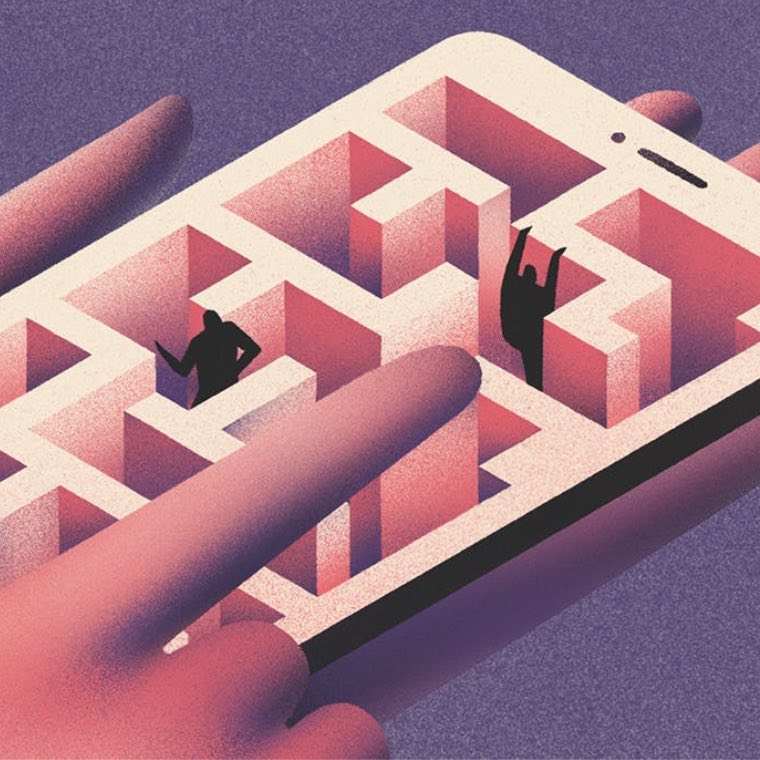
Strategy
Why every good business is a design business
April 2023Good business design is not a “nice-to-have”. For a successful business, it’s a ‘must-have’. It needs to be top of the agenda in every department from management to marketing, in every business whether it’s a digital services company, retailer or manufacturer.
Good design is what makes your product or service both useful and desirable and it’s what makes your brand recognisable. Good design reflects your values and makes customers feel that they can trust you. As Thomas J Watson put it when he was head of IBM in 1976, “Good design is good business.”
Good design and the bottom line
“Studies show that companies strong on design performed significantly better than those that aren’t”
Mr Watson’s maxim held true back in the 1970s and it holds even truer today. Customers have come to expect everything from the apps they use to the phone in their pocket to have gone through a thorough design process. And with more brands to compete with, it’s more important than ever that your design stands out.
But while it might be getting harder to stand out, it’s definitely worth the effort and investment. According to a study by McKinsey, companies strong on design performed better than those that aren’t, with 32 percentage points higher revenue over five years.
And another study, this time by the UK’s Design Council, found that design-focused companies outperformed the FTSE 100 index by an impressive 200%.
It's all about feelings
There’s another reason that design is more important now than in the past. As John Maeda, design partner at venture capital firm Kleiner Perkins, put it, “Moore’s law efficacy is dwindling. We have enough processing power. We aren’t driven to buy it because it’s faster or has more memory. Now we have to buy it because of how it makes us feel.”
So how we feel affects the way we behave and what we buy. But how does design affect the way we feel?
First impressions really count
“Humans instinctively believe that beautiful is better”
People are like goldfish when they’re online. Our attention span is, frankly, pathetic. Google Research found that it takes less than 50 milliseconds for users to build an initial “gut feeling” that helps them decide whether they’ll stay or leave a website. And people are more likely to trust a simple, well-designed website than a cluttered, ugly one.
As well as having short attention spans, we humans are also shallow creatures – we instinctively believe that beautiful means better. We have an ‘attractiveness bias’ when it comes to design, even with something as simple as a CTA. We’re more likely to click on a button if it’s colourful and aesthetically pleasing than if it’s grey and boring.
Creating connections through design
“Consistency is key. It builds trust and makes your brand instantly recognisable”
Design helps you connect with your customer on an emotional level. Your imagery, your copy, your font size, colours – everything – helps to express what your brand stands for and communicate the values you share with your customer.
Take the example of elespacio’s work with Ismax, a Spanish recycled paper-goods brand. From the simple but striking packaging to the funny, friendly copy, everything was designed to draw you into the Ismax world, saying, “We’re natural, we’re authentic, we’re sustainable – and you’re part of the family!”
It made the customer smile and feel all warm and fuzzy about buying toilet paper (no mean feat, even if we say so ourselves!).
Crucially, to connect with your customer, consistency is key. A premium product should have consistently “premium” packaging, for example, and the look and feel should be the same everywhere from your logo to your customer emails to your website. It’s consistency that builds trust – and makes your brand instantly recognisable.
Good design is the user’s best friend
So it’s all about looks? Not quite. When we talk about the importance of design in business, we’re not just talking about prettying something up, or choosing the right colours and typefaces.
Design is wrapped up in every entity that’s been made by humans that you can touch or see, from websites to gadgets and clothes to motorways. But it’s also in the less tangible – the user’s journey through your product, their interaction with customer service, the user experience in general.
What marks out the design as ‘good’ in all of these contexts is the way it puts the user’s needs first, whether it’s a pocket-knife or an online sign-up form.
Luckily, there are more tools than ever to measure how well a design is working for the customer. Insights from real customers are readily available, via social media and smart devices, helping businesses to test, iterate and learn, faster than ever before.
It costs more (but it’s worth it)
“Innovation flourishes where there is room for trying, testing, and failing”
For design to be good, i.e. consistent and user-centric, you need a good design team, and well-qualified designers don’t come cheap.
Good design also costs because it requires a longer process involving research, user testing and prototyping as well as the creation process itself. Innovation and creativity flourish in an environment where there is room for trying, testing – and failing. Making that room means making time (and time, as we all know, means money).
But perhaps most importantly of all, the cost of good design is nothing compared with the cost of bad design. Poor design leads to poor brand perception, lost customers and lost revenue. If, conversely, designers are allowed to look for the right questions, try new things and test their solutions, the results will be better and the financial rewards will follow.
Illustration: Magdalena Wilk
